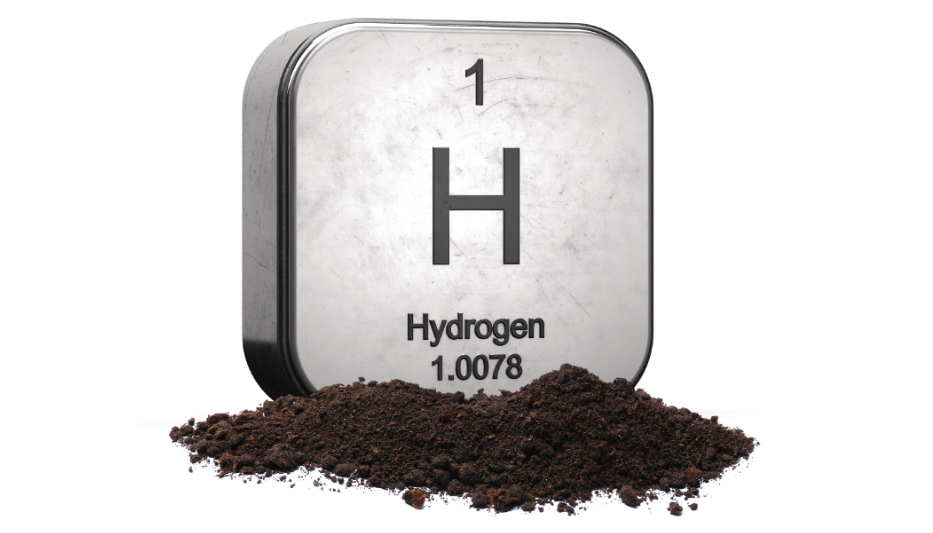All
A Chance Hydrogen Discovery
by Ed Burke and Kelly Burke, Dennis K. Burke Inc.

A cache of white hydrogen fuels thoughts of commercialization
When a team of scientists were assessing the methane gas levels beneath the ground in Southeastern France, they made a surprising discovery.
Jacques Pironon and Philippe de Donato, both directors of research at France’s National Centre of Scientific Research, were assessing the amount of methane gas in the sub-soils of the Lorraine coal mining basin to see if local production of methane could be viable.
The team used a specialized probe that analyzes gases dissolved in the water of rock formations deep underground. To their surprise, they hit a large potential deposit of naturally occurring hydrogen, also known as white hydrogen.
Following chemical monitoring of the rock strata and accompanying methane deposits, they were surprised to find that a high proportion of hydrogen was present and that its concentration grew as they descended, reaching 20 percent at 1,250 meters down. Such levels allowed them to speculate that at 3,000 meters below the ground, hydrogen content could exceed 90 percent, according to their modeling. On the basis of the gas data at 1,100 meters below ground (14 percent hydrogen), the Lorraine deposit could contain up to 46 million tons of white hydrogen, which is more than half of the world’s current annual production of grey hydrogen.
The team has proposed a deep excavation to 3,000 meters to demonstrate that the concentration of hydrogen does indeed grow as they descend. If this is the case, it will confirm the presence of an exceptional deposit of naturally occurring hydrogen, bigger than any previously discovered, and they can make a first realistic estimate of its scale.
This comes on top of France’s other potential white hydrogen reserves currently being explored in the Alps, New Caledonia, and the Pyrenees. Together with the Lorraine deposit, these resources could enable France to produce three million tons of the gas a year. Other untapped deposits could lie in the United States, Australia, and elsewhere in Europe.
The Colors of Hydrogen
The “colors” of hydrogen point toward the process by which they are produced. Hydrogen is a gas which, most of the time, is found in compounds with other elements, like in water and fossil fuels.
Grey hydrogen refers to hydrogen produced in a factory by processing natural gas. It’s currently the main source of hydrogen used in energy. Grey hydrogen attracts criticism because of the amount of CO2 emitted during production.
Green hydrogen comes from electrolysis of water using electricity generated from renewable sources. Production remains small scale and expensive.
These types of hydrogen are what are called secondary forms of energy.
White hydrogen is hydrogen already present in that state in nature. It is therefore a primary energy source. White hydrogen offers the huge advantage of not needing additional energy inputs to extract the hydrogen from other gases or substances. But white hydrogen could quickly become more expensive if large deposits require deeper drilling.
The Mali Story
The world’s only operating white hydrogen well is located in the West African country of Mali. When a study about the well came out in 2018, it caught a lot of attention from the scientific community.
As the story goes, back in 1987, in the village of Bourakébougou, a driller was left with burns after a water well unexpectedly exploded as he leaned over the edge of it while smoking a cigarette.
The well was swiftly plugged and abandoned until 2011, when it was unplugged by an oil and gas company and reportedly found to be producing a gas that was 98 percent hydrogen. The hydrogen was used to power the village. More than a decade later, it is still producing.
Mali’s well remains the world’s only operating white hydrogen site. Its production, which hovers around 5 tons per year, is miniscule compared to global grey hydrogen output estimated at 80 million tons per year.
Startups And Investors
Naturally occurring hydrogen is an interesting prospect for startups and investors here in the U.S. and around the globe. The challenge for businesses and scientists will be translating its hypothetical promise into a commercial reality. But many of the startups are bullish and predicting that it will be years, not decades, to commercialization.
Australia-based Gold Hydrogen is currently drilling in the Yorke Peninsula in South Australia. It targeted that spot after scouring the state’s archives and discovering that back in the 1920s, a number of boreholes had been drilled there which had very high concentrations of hydrogen. Those prospectors, interested only in fossil fuels, abandoned them. While there is more testing and drilling to do, the company could get into early production possibly in late 2024.
In the U.S., Koloma, a Denver-based white hydrogen start-up, has secured $91 million from investors, but remains tight-lipped about exactly where it is – or will be – drilling and when it is aiming for commercialization.
Another Denver-based company, Natural Hydrogen Energy, successfully completed an exploratory hydrogen borehole in Nebraska in 2019 and has plans for new wells.
Hydrogen Fears
Hydrogen, like all fossil fuel gases, is flammable. It can form volatile compounds when its concentration in the air exceeds 4 percent. One of the challenges of potential future extraction of hydrogen will involve avoiding all contact between hydrogen and oxygen in the air through separation and distribution processes.
In both industry and transport, handling hydrogen is commonplace, and the risks have been minimized.
Ed and Kelly Burke are respectively Chairman of the Board and Senior Marketing Manager at fuel distributor Dennis K. Burke Inc. They can be reached at 617-884-7800 or ed.burke@burkeoil.com and kelly.burke@burkeoil.com.
Related Posts
 100 Years of Helping Fuel Retailers Deliver!
100 Years of Helping Fuel Retailers Deliver!
Posted on August 18, 2025
 U.S. Competing to Secure Critical Minerals
U.S. Competing to Secure Critical Minerals
Posted on June 16, 2025
 The Clean Air Act, the EPA, and State Regulations
The Clean Air Act, the EPA, and State Regulations
Posted on May 14, 2025
 Day Tanks Support Back-up Generators in Extreme Conditions
Day Tanks Support Back-up Generators in Extreme Conditions
Posted on March 10, 2025
Enter your email to receive important news and article updates.
